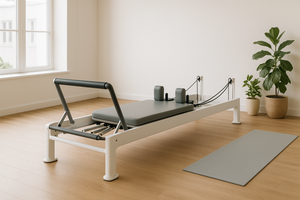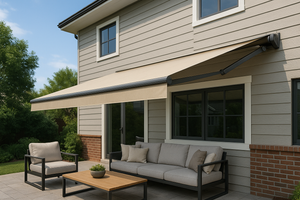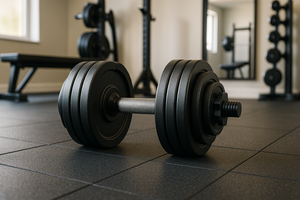Why a Mobile Scaffold Is a Must-Have for Home DIY and Maintenance Projects

Tackling home improvement projects can be both exciting and challenging. Safety and efficiency are key to successful DIY endeavors. A mobile scaffold is an essential tool for any serious DIY enthusiast. It offers a stable and secure platform for working at heights, reducing the risk of falls.
Unlike ladders, mobile scaffolds provide a larger work area, enhancing project efficiency. They are versatile, suitable for tasks like painting, cleaning gutters, and installing fixtures. With wheels for easy movement, they adapt to various project needs.
Investing in a mobile scaffold can save money by reducing the need for professional services. It’s a smart choice for both indoor and outdoor projects. Discover how a mobile scaffold can transform your DIY experience.
Explore our full range of scaffolding solutions for both DIY and professional projects.
What Is a Mobile Scaffold and How Does It Work?
A mobile scaffold is a type of scaffolding equipped with wheels for flexibility. It provides a movable work platform, ideal for accessing hard-to-reach areas. This scaffold is designed for both safety and convenience.
The framework is typically lightweight yet sturdy, ensuring durability without sacrificing mobility. Users can easily assemble and disassemble the scaffold, adapting it to different projects. Its design also allows for quick repositioning around the worksite.
Key features include:
-
Wheels with locks: Ensure stability when stationary.
-
Guardrails: Provide additional safety at heights.
-
Adjustable height: Customize the platform to specific project needs.
These features make mobile scaffolds indispensable for effective and safe home maintenance or DIY tasks.
Find essential tools and accessories to complete your scaffold setup and get the job done right.
Key Benefits of Using a Mobile Scaffold for DIY Projects
Mobile scaffolds offer numerous advantages that enhance both safety and efficiency. Their primary benefit is providing a stable work platform, which minimizes the risk of falls. This is crucial for tasks involving elevated work, such as painting or repairing roofs.
Another key advantage is versatility. Mobile scaffolds are suitable for a wide range of DIY projects, from cleaning gutters to installing light fixtures. They cater to both indoor and outdoor tasks, offering flexibility for various home improvements.
Unlike traditional ladders, mobile scaffolds offer a larger workspace. This allows for better access to tools and materials, reducing time spent on adjustments. The ability to move smoothly across the work area also boosts overall productivity.
Additional benefits include:
-
Ease of assembly and disassembly
-
Wheels for simple mobility
-
Safety features like guardrails and locking wheels
These attributes make mobile scaffolds a wise investment for DIY enthusiasts. Their practicality and adaptability make them essential tools for any serious home project.
Check out the popular Mobile Safety High Scaffold Ladder Tool – 450kg, ideal for heavy-duty tasks around the home.
Mobile Scaffold vs. Ladders and Traditional Scaffolding
When deciding between a mobile scaffold, a ladder, or traditional scaffolding, key differences determine the best choice. Mobile scaffolds provide a more stable and larger work platform than ladders, which can wobble or tip.
Traditional scaffolding, while sturdy, lacks mobility. Mobile scaffolds, equipped with wheels, move easily around your work area. This makes them ideal for projects where you need constant repositioning.
Consider the following differences:
-
Stability: Mobile scaffold offers better stability than ladders.
-
Mobility: Mobile scaffolds move smoothly, unlike traditional scaffolding.
-
Workspace: Larger work area compared to ladders.
Evaluating these factors helps ensure you select the right tool for your DIY projects.
Top Home Projects Made Easier with a Mobile Work Platform
A mobile work platform transforms home improvement tasks. It provides stability, making high tasks safer and more efficient. Whether painting a ceiling or cleaning gutters, its benefits are clear.
For painting projects, a mobile scaffold offers a stable base and wide reach. This eliminates the need for constant up and down movements, increasing efficiency. It also ensures a smooth, even coat of paint with fewer repositionings.
Installing light fixtures becomes a breeze with a mobile platform. Its adjustable height allows precision, reducing strain and fatigue. This ensures a safer way to handle electrical projects without awkward stretches.
Consider these popular DIY projects made easier by a mobile scaffold:
-
Painting high walls and ceilings
-
Installing and repairing light fixtures
-
Cleaning gutters and windows
-
Hanging decorations or artwork
-
Roof repairs and maintenance
Window cleaning and gutter maintenance are simple too. The platform grants easy access, reducing the hazard of precarious balancing on a ladder. Mobile scaffolds ensure project success with enhanced comfort and safety.
Essential Safety Tips for Using Mobile Scaffolding
Safety should be your top priority when using mobile scaffolding. Proper use can prevent accidents and ensure project success. Understanding and following safety guidelines is crucial.
Before each use, inspect the scaffold. Check for any damage or missing parts that could compromise stability. Routine inspections extend the lifespan of your equipment and protect you from potential hazards.
Follow these essential tips to remain safe:
-
Ensure all wheels are locked before climbing
-
Install guardrails to prevent falls
-
Avoid overloading the scaffold
Always maintain a clean and organized work area. A cluttered space increases the chance of trips and falls. By keeping safety in mind, your DIY projects will be both productive and risk-free.
How to Choose the Right Mobile Scaffold for Your Needs
Choosing the right mobile scaffold involves considering your specific project needs. Not all scaffolds are created equal, and selecting the right type is essential for efficiency and safety. Start by evaluating the height requirements and weight capacity needed for your projects.
Consider the space available and the surface you'll be working on. Some scaffolds are better suited for indoor projects, while others excel outdoors. Identify the features that are most important to you, such as adjustability or easy assembly.
Here are key factors to guide your decision:
-
Height and load capacity
-
Indoor vs. outdoor use
-
Ease of movement and assembly
Ultimately, your choice should align with your project requirements and budget. Investing in a suitable scaffold enhances both the ease and quality of your work.
Setup, Maintenance, and Storage Best Practices
Setting up a mobile scaffold correctly is crucial for safety and efficiency. Always follow the manufacturer's instructions to ensure proper assembly. Double-check that all components are securely fastened before use.
Regular maintenance extends the life of your scaffold. Inspect it for damage or wear before each use. Ensure that wheels and brakes function correctly to prevent accidents.
When it comes to storage, keep the scaffold in a dry area to prevent rust. Disassemble it if space is limited. Here are some best practices:
-
Follow setup instructions carefully
-
Inspect regularly for wear and damage
-
Store in a dry, safe place
Adhering to these practices enhances the scaffold's performance and longevity.
Conclusion: Invest in Safety and Efficiency for Your Next DIY Project
Incorporating a mobile scaffold into your home projects significantly boosts safety and efficiency. This tool offers a stable platform, allowing you to work comfortably at height.
It's an investment that enhances both the quality and speed of your work. With versatility in its use, a mobile scaffold can tackle various projects, from painting to repairs.
Choosing to use a mobile scaffold underscores your commitment to safety. It ensures you can complete projects efficiently without compromising on safety. Equip yourself with this essential tool for a truly professional home improvement experience.
Related Articles
- Tags: Scaffolding










